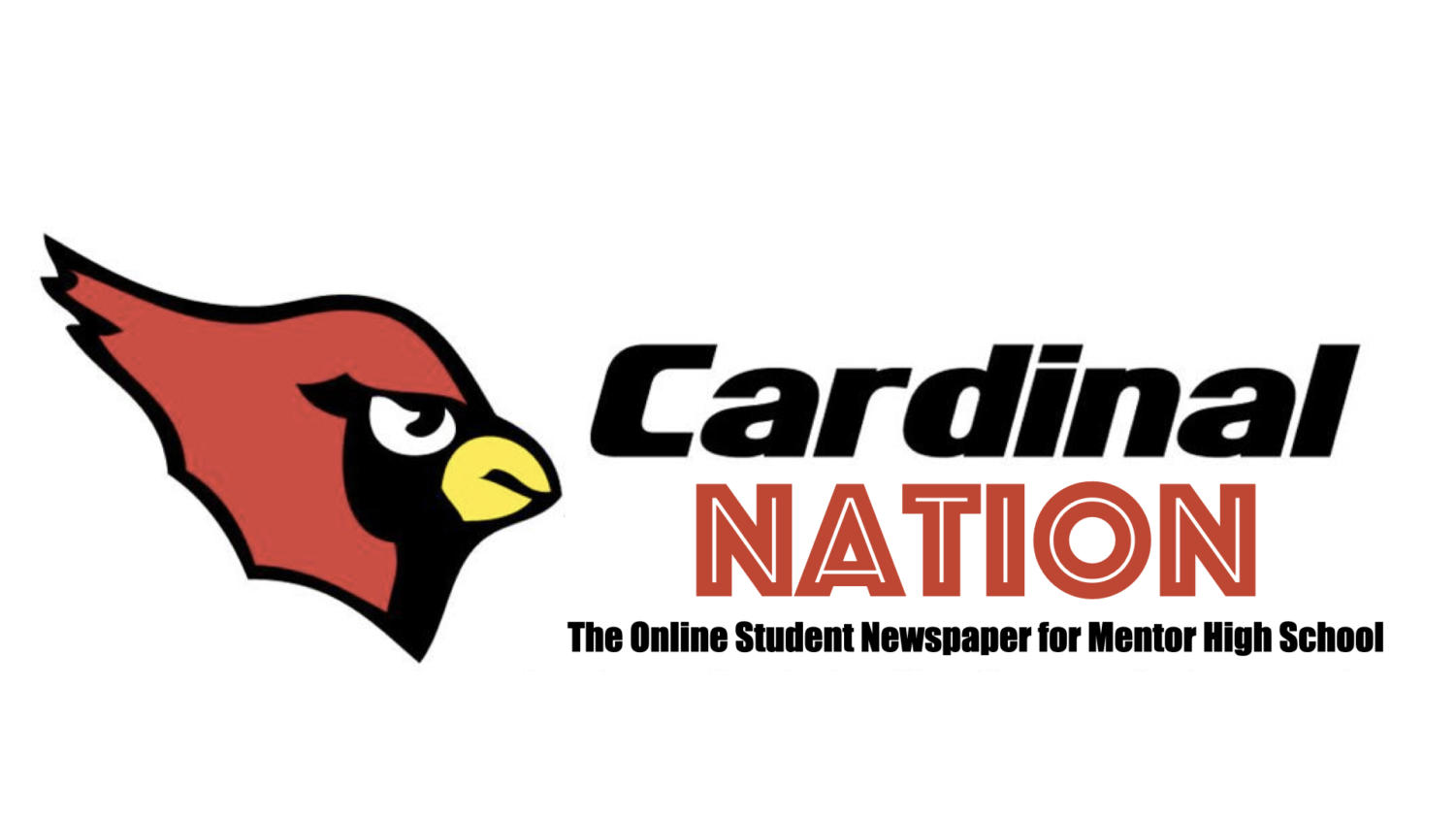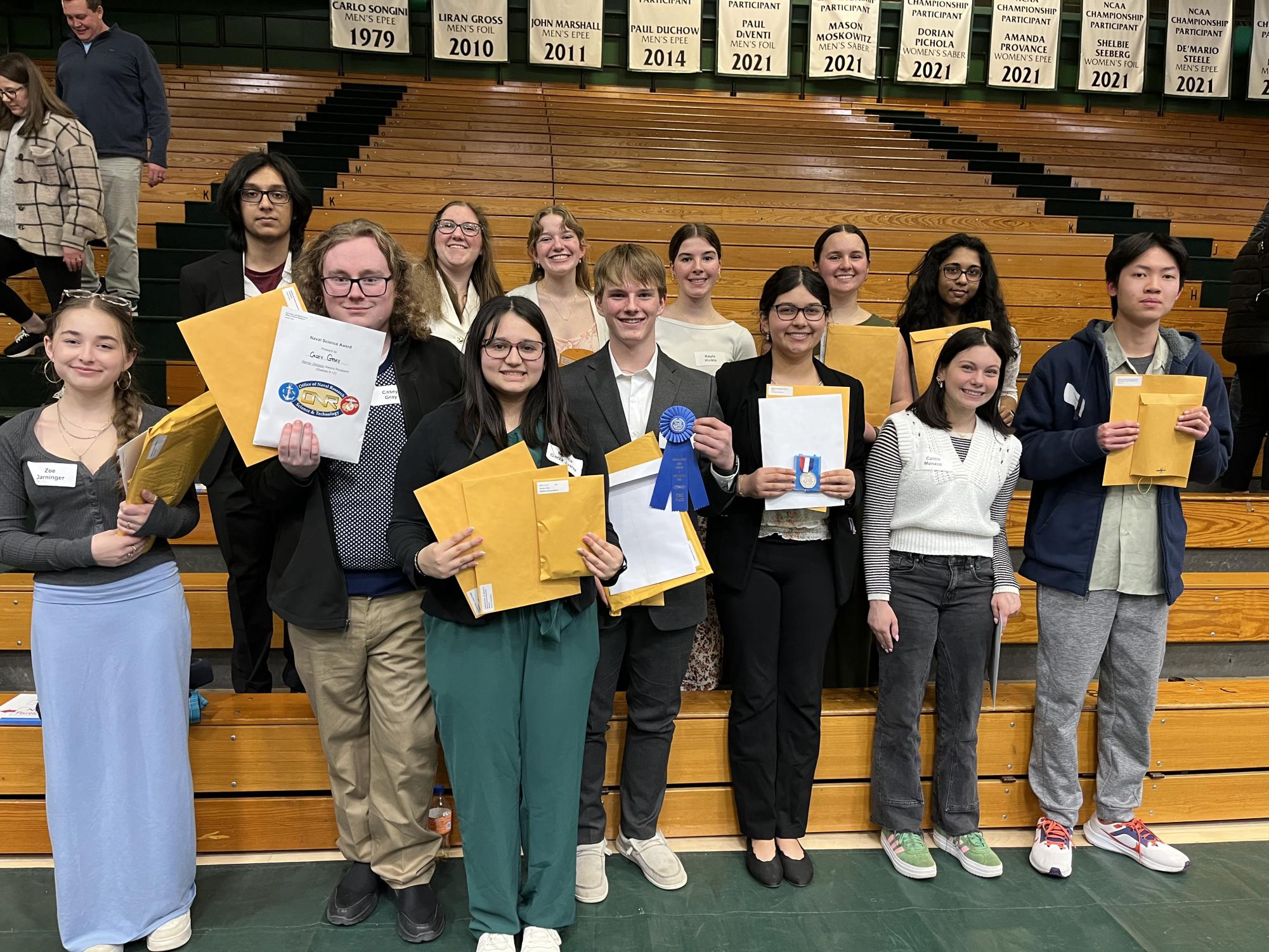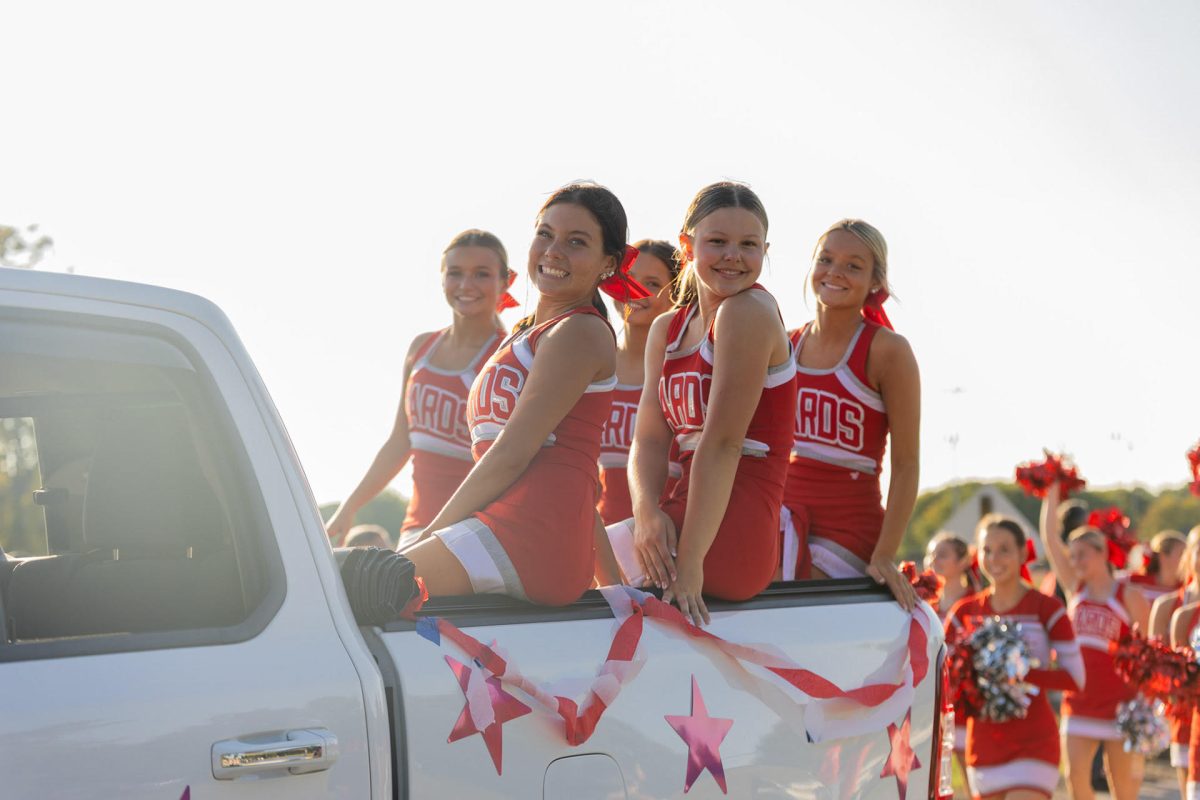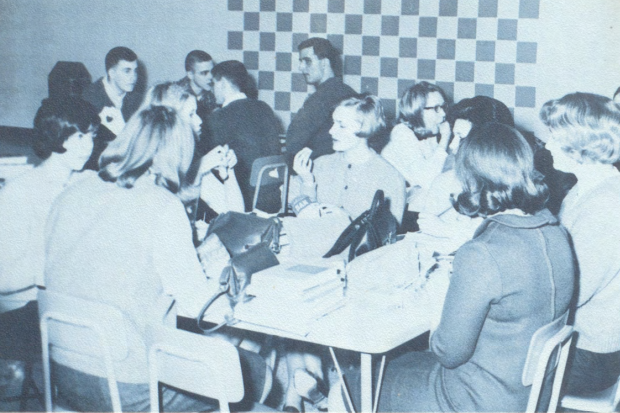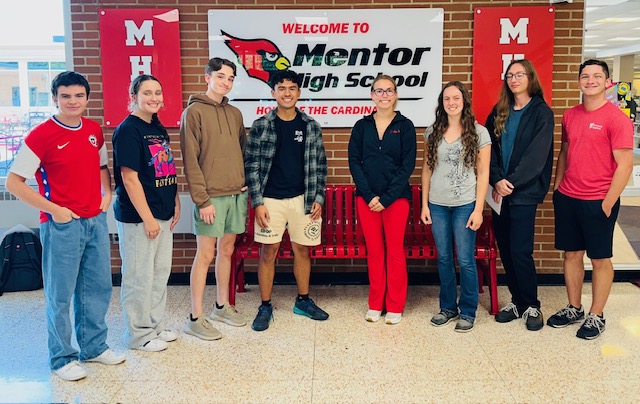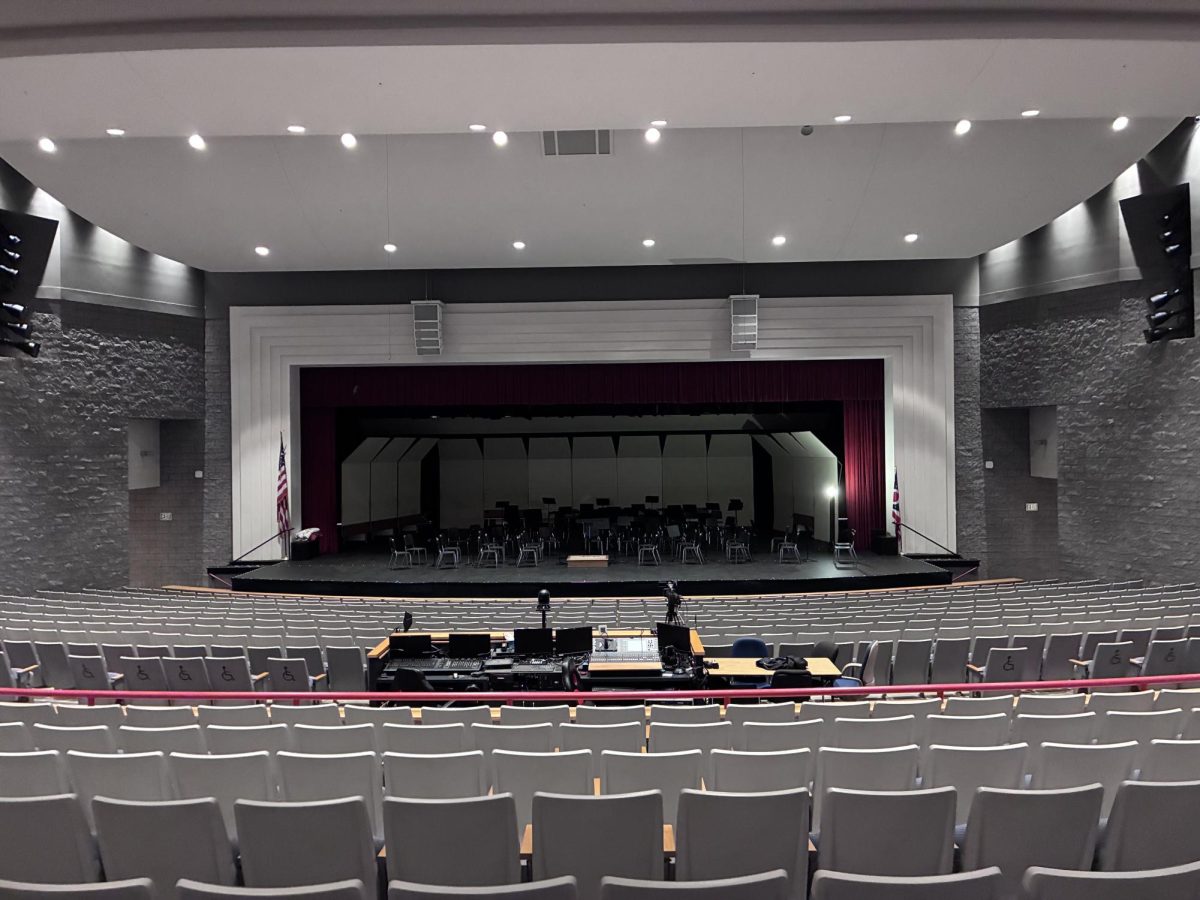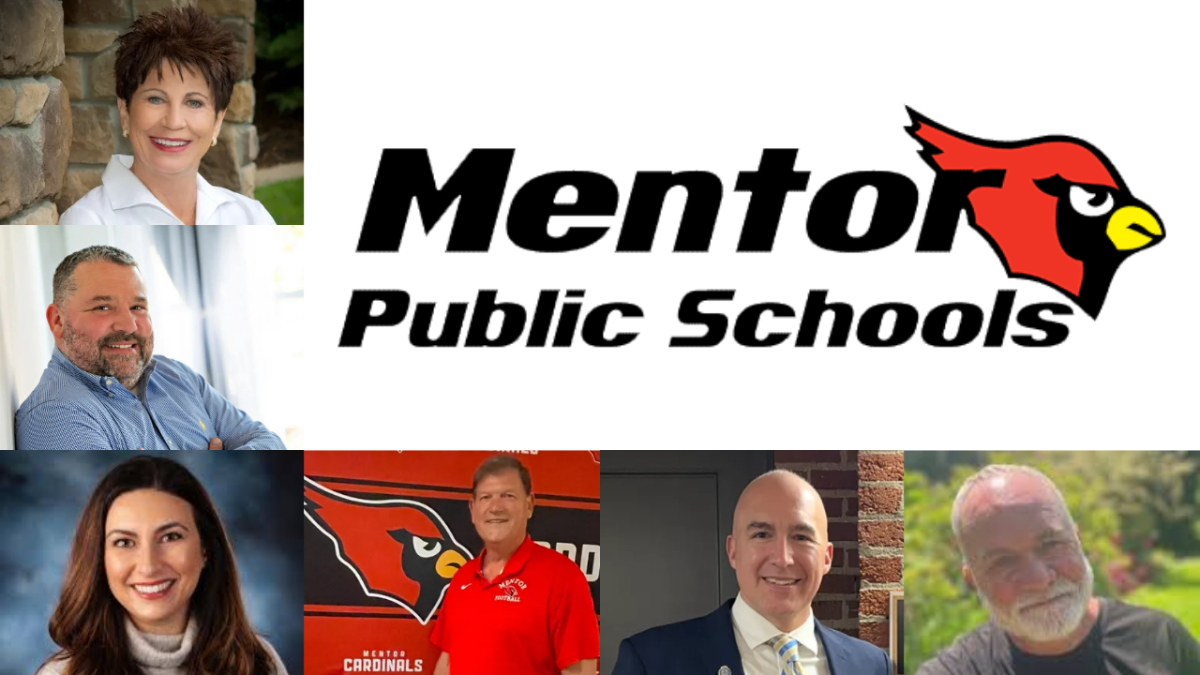On March 11th through the 13th, thirteen of Mentor’s Science Research students competed at NEOSEF, the Northeast Ohio Science and Engineering Fair. NEOSEF is a non-profit volunteer organization for young adults who are interested in science and engineering to have an opportunity to compete. According to neosef.org, it is a four-day event with about 350 students from over 80 schools around Northeast Ohio, where they set up science fair displays, converse about their projects with 260+ judges, and compete for more than $50,000 in prizes. NEOSEF then selects students to advance to further levels of competition, such as the Regeneron International Science and Engineering Fair (ISEF) and the Thermo Fisher Scientific Junior Innovator Challenge (JIC). Two of Mentor’s very own Science Research students are advancing to ISEF in Columbus this year, continuing our 5-year streak of sending students to ISEF!
All 13 Mentor students who attended NEOSEF placed somewhere in the top 3. Here are their placements:
3rd place in Chemistry – Casey Gray and Zahran Shams
2nd place Biology – Ayesha Faruki and Kayla Hinkle
2nd place Environmental Science – Zoe Barninger and Anushree Zimmerman
2nd place Behavior Science – Monica Garza and Caitlin Monaco
2nd place Earth/Space – Yehuai Lin
2nd place Engineering – Kaitlyn Morris
1st place Chemistry – Maddie Grice
1st place Earth/space – Kira Florek
1st place Environmental Science – Owen Medved
NEOSEF chose Owen Medved as one of the students to help represent Northeast Ohio at ISEF this year! Kira Florek is also going to ISEF because she qualified at the Buckeye Science and Engineering Fair in Columbus a few weeks back.

Owen’s project – Investigating Global Warming’s Impact on the Metamorphosis of Painted Lady Butterflies
Kira’s Project – The Relationship Between Wind Speeds, Warning Tags, and Distance to Maximum Damage Point and EF Scale Ratings of Tornadoes
Cardinal Nation reached out to Owen for comments on his inspiration and experience:
Cardinal Nation: What inspired your science research topic?
Owen Medved: Over the summer, when I was thinking of topics for Mrs. Cohen’s Science Research class, I was also researching Entomology for Science Olympiad. From this, I went down the rabbit hole of how insects as a whole play so many roles in an ecosystem, more than most people would realize, and knew that insects would be a part of my topic. After this, Mrs. Cohen suggested that I find a relevant, real-world topic that I can simulate/observe and how it affects a population of insects. I thought for a while and concluded climate change because I figured that, because most insects are cold-blooded (ectothermic), and their environment dictates their metabolism and other bodily processes, this could be a relevant topic. After all this, I figured I needed an insect to grow and observe, so I chose butterflies because they play multiple significant roles in their ecosystems and agriculture.
Cardinal Nation: Have you ever been to ISEF? Are you excited?
Owen Medved: I have never been to ISEF, but I am excited for it.
Cardinal Nation: Do you plan to continue your research after ISEF and Science Research? Does it relate to your career path or any passions for your future?
Owen Medved: I hope that I can continue my research because I do think it is really interesting, but logistically, it would be difficult and expensive to research on my own. In terms of a career path, however, I do not know what I want to do, and while I think insects are very interesting, I have other interests too that I might enjoy studying more in the future.
Cardinal Nation: What advice do you have for upcoming Science Research students who would like to participate in ISEF?
Owen Medved: My advice for upcoming students would be to trust Mrs. Cohen and take what she says seriously; she knows the process and has contacts that will help along the way. Also, I would suggest that you make your project have many implications for the real world and get a mentor who is knowledgeable on the topic to help you along the way.
Congratulations to Owen, Kira, and the other Science Research students for their outstanding performance at NEOSEF!
Cardinal Nation also reached out to Mrs. Cohen, the Science Research teacher, to ask some questions about the course and the benefits it has for students.
Cardinal Nation: What is your Science Research class, and how does it work?
Mrs. Cohen: My course is designed to have students conduct high-level research, carry out a formal research project, and present their findings at our local and regional science fairs. The course is a science elective that students can take as juniors and seniors, though I have had a couple of sophomores take the course. Many of my students require the guidance of college professors and professionals in the field. Generally, students start generating topics in late summer. By fall, they’ve conducted research and designed their experiments. In the 2nd and part of the 3rd quarter, we carry out experimentation. Then in the 2nd half of the year, we analyze data and draw conclusions. We then create tri-fold boards and 10-15 minute presentations. Throughout the 4th quarter, we compete at various science fairs.
Cardinal Nation: How long have you been teaching Science Research?
Mrs. Cohen: I’ve been teaching science for about 25 years.
Cardinal Nation: What are the benefits for students who do well at NEOSEF? ISEF?
Mrs. Cohen: NEOSEF is the Northeast Ohio Science and Engineering Fair. It usually takes place at CSU. Students who do well here can qualify for the International Science and Engineering Fair. ISEF is held in different cities each year. This year it is being held in Columbus. Both Kira Florek and Owen Medved qualified for ISEF this year. These fairs also provide monetary prizes – sponsored awards – where students can win all sorts of money. In addition to NEOSEF, we also participate in another set of fairs called Regional Science Day. This is held at Kent State. Doing well here qualifies students for State Science Day in May. We have 10 SSD qualifiers this year. There are other benefits to participating in this course. Many of my students are able to get jobs in college labs as freshmen, as they already have the skills needed to do the job. Most students can’t get into labs until their junior and senior years. Also, my students learn how to communicate with adults on a professional level. They learn how to correspond through email and by phone in a manner they currently don’t know how to do. They learn an incredible amount of what we call soft skills. This course definitely makes students stand out during the college application process as they have a unique set of skills, projects, and awards that most students don’t have.
Cardinal Nation: What advice do you have for any future Science Research students who are deciding if they should take the class?
Mrs. Cohen: Students who are science-focused should really consider taking this course. It will provide them with a litany of academic benefits along with a great list of new skills that will help them in their college future and beyond.
As Mrs. Cohen mentioned, twelve of our Science Research students also competed at the Kent State Regional Science Day competition on March 22nd. Doing well at this competition can help students qualify for State Science Day in Columbus. According to the Ohio Academy of Sciences, State Science Day is “the highest pinnacle of student research projects in Ohio.”
The following Mentor students qualified for State Science Day:
Zoe Barninger
Ayesha Faruki
Kira Florek
Monica Garza Juarez
Emily Girard
Maddie Grice
Kayla Hinkle
Yehuai Lin
Owen Medved
Zahran Shams
These students all won a Superior at Regional Science Day. Congratulations!
